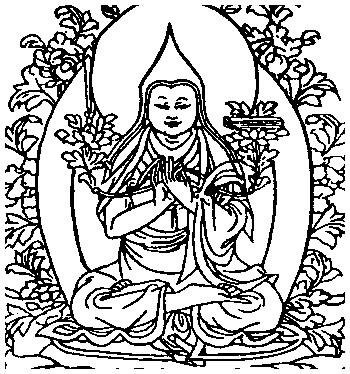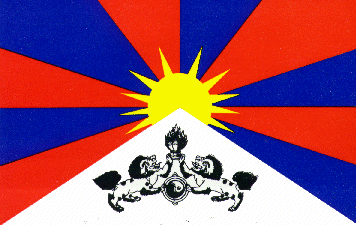
|
Tibetan Buddhism Buddhism and the
practice of Buddhism has taken on a multitude of methods and rituals reflecting
various cultures as it has spread throughout Asia and the world. There are two
over-arching schools of Buddhism; one is called Mahayana or "Great
Vehicle" and the other is the Hinayana or "Small Vehicle." This
latter term is a pejorative and comes from a distinction made by many
Mahayanists. It is meant to include what is otherwise called the Theravada or
the Pali School tradition. In Pali, Theravada means "teaching of the elders
of the order." Emphasis in the Theravada school is on liberation of the
individual which is achieved through efforts in meditation and in the observance
of the rules of moral discipline. (An excellent site which explains Theravada
Buddhism and provides many texts and resources is Access to Insight.)
It is believed that Mahayana developed from some of the Hinayana schools of
Buddhism. Mahayana emphasizes that the motivation of its followers to attain
enlightenment is for the sake of all other sentient beings and thereby all
delusions are completely removed. Both of these schools are rooted in the basic
teachings of the historical Buddha (Shakyamuni), but stress somewhat different
aspects of those teachings.
Tsongkhapa (Tibetan block print) The Gelug teaching tradition (sometimes called
the Yellow Hat Order) evolved from the great Tibetan philosopher and teacher Tsongkhapa
(Lobsang Dragpa, also know as Je Rinpoche 1357-1419 CE) who is identified as a
manifestation of Manjushri, bodhisattva of Wisdom.. Tsongkhapa with the aid of his
disciples (Je Darma Rinchen and Je Dulwa Dzin-his) founded Ganden Monastery in 1409 and
with the aid of two other disciples (Jamyang Choje Tashi Pelden and Jamchen Choje Shakya
Yeshe) founded Drepung in 1416 and Sera in 1419. It is said that Sera and Drepung once
housed up to seven thousand, seven hundred monks each.
Flag of Tibet Sources: The Buddhist Handbook, A Complete Guide to Buddhist Schools, Teaching, Practice, and History. John Snelling. Rochester, Vermont: Inner Traditions International. 1991. The Shambhala Dictionary of Buddhism and Zen. Translated by Michel H. Kohn. Boston: Shambhala. 1991. A Handbook of Tibetan Culture, A Guide to Tibetan Centres and Resources throughout the World. Edited by Graham Coleman. Boston: Shambahala Publication, Inc. 1994. Enlightened Beings, Janice Willis Tibet, A Political History, Shakapba Back to: Top of pageBack to: Center InformationBack to: Thubten Shedrup Ling Index
|

